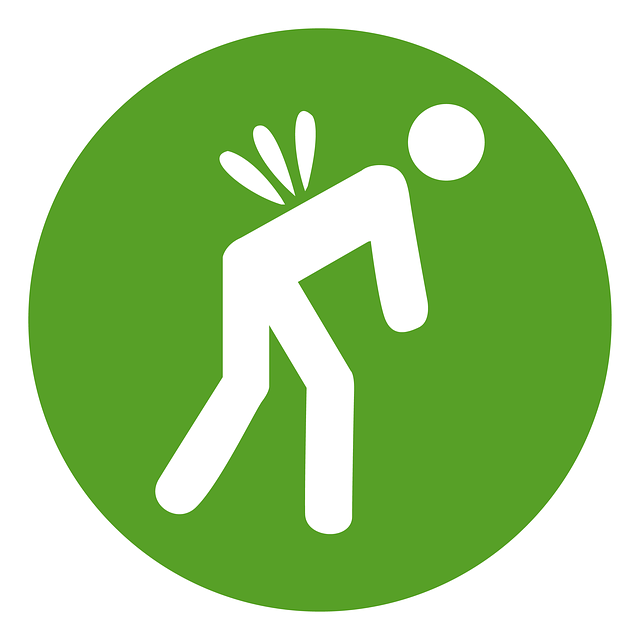Chiropractic Accelerates Recovery for Post-Accident Shoulder Pain

Chiropractic care offers a non-invasive treatment for shoulder pain after car accidents, focusing on…….
In the aftermath of a car accident, the human body often bears the brunt of the impact, leading to various injuries, with shoulder pain being a prevalent concern. This article delves into the intricate world of treating shoulder pain resulting from vehicular collisions, exploring a multifaceted approach that combines medical expertise, technological innovations, and policy frameworks. By examining historical practices, global trends, economic implications, and future prospects, we aim to provide an all-encompassing guide for understanding and addressing this complex issue. Readers will gain insights into the various strategies employed to alleviate shoulder pain, the challenges faced, and the potential for growth in this critical area of healthcare.
Definition: Treatment for Shoulder Pain After Car Accidents refers to the medical, rehabilitative, and therapeutic interventions aimed at managing and alleviating pain and dysfunction in the shoulder joint following a motor vehicle collision. This comprehensive approach involves a multidisciplinary team of healthcare professionals, including orthopedic surgeons, physical therapists, chiropractors, and rehabilitation specialists.
Core Components:
Emergency Care: Initial assessment and stabilization are crucial to prevent further damage. This includes ensuring vital signs are stable, managing bleeding, and immobilizing the shoulder to reduce pain and protect the joint.
Diagnostic Imaging: Advanced imaging techniques such as X-rays, MRI scans, and ultrasound play a pivotal role in identifying the extent of injury, ruling out fractures, dislocations, or soft tissue damage.
Medical Management:
Physical Therapy: This is a cornerstone of treatment, focusing on:
Chiropractic Care: Chiropractic manipulation can be beneficial for mild to moderate shoulder subluxations (partial dislocations) or muscle spasms, reducing pain and improving mobility.
Historical Context: The treatment of shoulder injuries after car accidents has evolved significantly over the years, mirroring advancements in medical science and technology. Early approaches focused on surgical intervention for severe fractures and dislocations. However, with time, a more holistic, multidisciplinary approach emerged, emphasizing rehabilitation and conservative management alongside surgery when necessary.
The burden of shoulder pain after car accidents is not confined to any single region, as motor vehicle collisions are a global health concern. According to the World Health Organization (WHO), road traffic injuries result in over 1.3 million deaths annually, with non-fatal injuries affecting millions more. The economic impact is substantial, with a 2020 study estimating the global cost of road traffic injuries at USD 574 billion.
Regional Variations:
| Region | Impact and Trends |
|---|---|
| North America | High rates of shoulder injuries due to a large number of vehicles and aggressive driving culture. Advanced healthcare infrastructure offers diverse treatment options, including robotic-assisted surgery. |
| Europe | Strict safety regulations have led to improved vehicle design, reducing severe shoulder injuries. A trend towards conservative management and rehabilitation is evident. |
| Asia | Rapid urbanization and increasing motorization contribute to a growing number of accidents. Traditional medicine alongside modern physiotherapy is prevalent. |
| Low-Middle Income Countries | Limited access to healthcare and resources, often leading to delayed treatment and higher rates of complications. Awareness campaigns and improved emergency response systems are needed. |
The economic landscape surrounding treatment for shoulder pain after car accidents is multifaceted, involving direct medical costs, indirect costs related to productivity loss, and the impact on insurance systems.
Market Dynamics: The global market for orthopedic treatments, including shoulder-related procedures, is projected to reach USD 804.5 billion by 2027, growing at a CAGR of 4.5% (Grand View Research, 2021). This growth is driven by the aging population, increasing motor vehicle accidents, and rising healthcare expenditure.
Investment Patterns: Private equity firms and venture capital investors have shown interest in orthopedic technologies, particularly those focused on minimally invasive procedures and robotic-assisted surgeries, which offer improved precision and faster recovery times.
Insurance Implications: Insurance companies play a critical role in covering treatment costs, but variations in policies across regions can impact patient access to care. Negotiations between providers and insurers are essential for ensuring affordable and accessible treatment options.
Technology has revolutionized the landscape of shoulder pain treatment after car accidents, offering new avenues for diagnosis, rehabilitation, and surgical intervention.
Diagnostic Tools:
Minimally Invasive Surgery: Robotic-assisted surgery has gained popularity due to its precision, reduced incision size, and faster recovery times compared to traditional open surgeries. This technology allows surgeons to perform complex procedures with minimal trauma to surrounding tissues.
Rehabilitation Technologies:
Despite significant advancements, the field of shoulder pain treatment after car accidents faces several challenges:
Future Directions:
Treatment for shoulder pain after car accidents involves a complex interplay of medical expertise, technological innovations, and policy considerations. As the global burden of road traffic injuries continues to grow, addressing this issue becomes increasingly vital. By embracing advancements in healthcare technology, improving access to care, and fostering collaborations between healthcare providers, researchers, and policymakers, we can enhance the quality of life for individuals affected by shoulder injuries resulting from vehicular collisions.

Chiropractic care offers a non-invasive treatment for shoulder pain after car accidents, focusing on…….

Chiropractic treatments for shoulder pain after car accidents effectively address misalignments by t…….

Chiropractic treatments for shoulder pain after car accidents offer effective, non-invasive solution…….

Chiropractic treatments for shoulder pain after car accidents address whiplash-related chronic disco…….

Chiropractic treatments for shoulder pain after car accidents offer a non-invasive solution with man…….

Chiropractic treatments for shoulder pain after car accidents offer a non-invasive solution to manag…….

Chiropractic treatments for shoulder pain after car accidents offer a non-invasive approach focusing…….

Chiropractic treatments for shoulder pain after car accidents effectively address injuries caused by…….

Chiropractic treatments offer a non-invasive solution for chronic shoulder pain after car accidents…….

Chiropractic treatments for shoulder pain after car accidents offer a natural, effective solution by…….